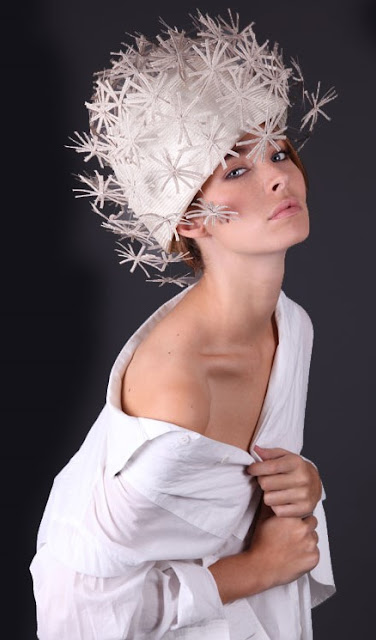Our trip to Normandy continues with a visit to Mont-Saint-Michel, a UNESCO World Heritage Site.
Mont-Saint-Michel is an island near Avranches. The island, a huge outcrop of granite, is home to an abbey at the top and a town at the bottom. The island is surrounded by water at high tide and mud at low tide. The island has long been fortified. During the 100 Years War, the English attacked unsuccessfully.
The island has long served as a religious refuge, at least since the 5th century. In the early 8th century, Aubert, the bishop of Avranches, had a series of dreams in which the archangel Michael appeared to Aubert and commanded him to build a church on the island. Aubert was hard-headed and didn't initially follow the command. So, Michael touched Aubert's forehead, making a hole in it. Aubert got with the program and started building an abbey with a church on top of the granite island.
In the abbey is a reproduction of the miraculous event (pictured below), complete with the hole in Aubert's forehead.
Over the next several centuries, construction of the abbey, town and fortifications continued with the magnificent result pictured below.

Visiting Mont-Saint-Michel is not easy. It is not near anything else. After arriving at a parking lot near the shore, a shuttle bus takes visitors across a long bridge. Then, visitors walk along a causeway to the town's main gate. At very high tides, the causeway is covered by seawater.
 |
| Mont-Saint-Michel's fortified main gate, with a drawbridge |
Once inside the gate, the path leads continuously upward--up narrow streets and up many, many staircases. If you are part mountain goat like Susan, you will enjoy climbing to the top.
 |
| Main Street in Mont-Saint-Michel |
 |
| A view of the top after climbing about halfway |
The climb is worth it. The views are wonderful and the church and abbey are lovely.
 |
| A view from the top |
 |
| Another view from the top |
We toured the church and part of the abbey. A portion of the abbey is closed to the public, because it is home (since 2001) to about a dozen sisters and brothers of the Monastic Fraternities of Jerusalem, an order founded in Paris in 1975. (The order has a lovely church, the Badia Fiorentina, and small shop in Florence that we visited many times during Year 2.)
Here is a photographic tour of the Romanesque church and abbey.
The facade, nave and roof of the church, together with the archangel Michael to whom the church is dedicated:
Next to the church is a cloister and a large refectory.
Below is one very large fireplace for cooking and warmth.
So, how you get supplies to an abbey built high on a hill? The answer appears below.
Two men walk inside the "big wheel" which pulls supplies up the hill.
We enjoyed visiting Mont-Saint-Michel, especially since our dear friend Susan Morris was with us.
Thanks for visiting Normandy with us. We hope you enjoyed it.









